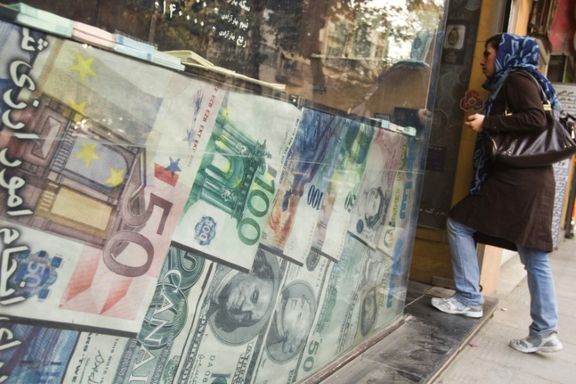Sanctions snapback augurs deeper pain for Iran's ailing economy

Iran could face fresh shocks to its already deeply rattled currency, costs of living and growth prospects if UN sanctions lifted by a 2015 nuclear deal are reimposed.

Iran could face fresh shocks to its already deeply rattled currency, costs of living and growth prospects if UN sanctions lifted by a 2015 nuclear deal are reimposed.
Britain, France and Germany on Thursday triggered a 30-day process—the so-called “snapback” mechanism—to restore the international sanctions on Iran over its nuclear program in a formal letter sent to the UN Security Council.
Activation of the snapback mechanism would reinstate comprehensive UN sanctions which would include travel bans, asset freezes, UN inspections of Iranian shipments and arms trade prohibitions—but notably exclude direct sanctions on oil exports or the Central Bank of Iran.
Restrictions on oil and banking have instead come mainly from unilateral US and EU measures imposed after the UN resolutions, which put direct pressure on Iran’s foreign exchange earnings. Energy exports are the state's biggest source of revenue.
Markets react
Renewed UN sanctions would indirectly reduce oil revenues, constrain access to foreign currency and place heavy pressure on the rial.
A weaker rial would raise import costs and production inputs, driving faster inflation. At the same time, the government might be forced to finance deficits through borrowing and money printing while inflation expectations climb, amplifying price pressures.
Markets are already reacting. The rial has lost more than 7.5% of its value on the Tehran open market in recent days.
According to experts at the Tehran Chamber of Commerce (TCC), factors such as declining currency reserves, limited oil sales, rising inflationary expectations and geopolitical risks are the main drivers of the projected surge in the dollar rate.
In a report released on Wednesday, the TCC outlined Iran’s economic outlook if the snapback mechanism was activated, presenting three scenarios—optimistic, likely, and pessimistic—through the end of 2025.
According to the report, the free-market exchange rate, which stood around 930,000 rials per dollar in August, could climb to 1.65 million under the pessimistic case. Annual inflation, already near 50%, is projected to reach 60–90%, while economic growth would remain negative in all cases, between a loss of 0.6% and 3.1%.
In the optimistic scenario, the rial would reach 1.15 million per dollar, inflation 60%, growth 1.5%, unemployment 10.5%, and the stock market value $120 billion.
Historical experience reinforces the risks: in 2012 and 2013, intensified oil and banking sanctions drove inflation from around 20% to nearly 40%, showing that even small disruptions in currency access can destabilize the economy.
In 2018, following the US withdrawal from the nuclear deal, the rial plunged again, and inflation stabilized at 30-50%.
Ultraconservative denial
Ultraconservative outlets like Tasnim and Fars frame the snapback as a chance to highlight Iran’s resilience. These outlets reflect the so-called “resistance economy” doctrine, claiming that sanctions are largely ineffective and that Iran has already learned how to bypass them.
“Iran’s economy has already endured the main shock of sanctions, and that experience has driven structural changes in oil sales, foreign trade, and even banking mechanisms," an article in the Revolutionary Guards-affiliated Tasnim, said. "As a result, it cannot be assumed that a return of the same sanctions—this time in a more limited form—would replicate the effects of the early 2010s.”
However, the reformist-leaning daily Jahan-e Sanat warned that the Iranian economy's capacity to absorb new shocks has diminished, and even the smallest constraint could upset the fragile balance.